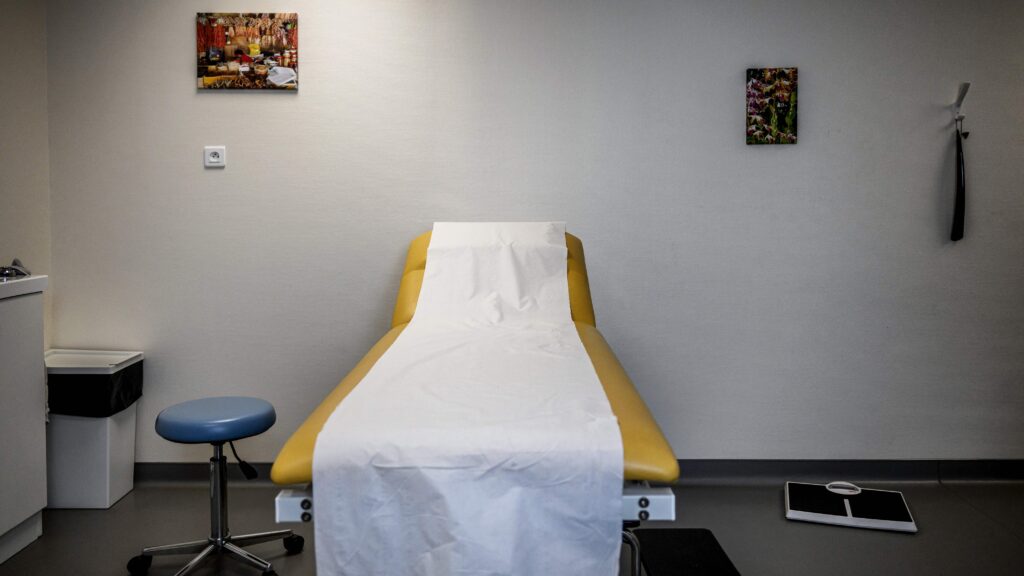Health
States with the best health outcomes still have large racial disparities

a A new analysis of health inequality in the United States finds that every state has wide racial and ethnic disparities in the performance of its health care systems.
The report Released Thursday by the Commonwealth Fund analyzed 25 indicators that track health outcomes, access to health care and quality of care for five racial and ethnic groups. Dramatic disparities were found among black, Hispanic, and Native Americans even in Rhode Island, Massachusetts, Connecticut, Hawaii, New Hampshire, and New York—the states considered to have the best overall performance. have healthcare. Across all states, white and Asian residents had the best health outcomes.
“Healthcare equity does not exist in any state in the US,” said David Radley, co-author of the report and senior scientist at the Commonwealth Fund. Analyzes of health care system performance that compare all groups together, he says, mask the gaps that exist within each state. The report also made clear that the health disparities faced by different racial and ethnic groups were not universal, but varied by state: some, like North Carolina, had better outcomes than other states for Native populations, but worse outcomes than others states for Latin American people.
States with generally good health outcomes, but much worse health outcomes for Black residents, included Minnesota, Illinois and Wisconsin. Only six states (Rhode Island, Massachusetts, Maryland, Connecticut, Delaware, and New York) had health outcomes for Black residents above the average performance of all states, but these outcomes were still much lower than those of the top-performing groups in each of the states. those states.
The states with the worst outcomes for Hispanic people compared to better-performing groups were Maryland, North Carolina and South Carolina. Hispanic people in almost all states had low premature death rates that matched those of white people, with the exception of several southwestern and mountain states where premature deaths were much higher: New Mexico, Arizona, Colorado, Texas and Wyoming. The report’s authors said more analysis was needed to understand why these states differed from each other, but said access to insurance and the challenges of providing health care in rural settings likely played a role.
The data came from 2021 and 2022 and therefore included deaths from Covid-19, which affected Black, Hispanic and Indigenous populations at higher rates. The premature death rate was higher among the black population in almost every state; in six southern and south-central states (Arkansas, Mississippi, Louisiana, Tennessee, Kentucky, and Missouri), premature death rates for both black and white residents were higher than in other states.
The report revealed high numbers of premature deaths among indigenous people, who in several states – South Dakota, Wyoming, Montana and North Dakota – had the highest premature death rates of any group in any state, with deaths largely caused by circumstances that are treatable.
The “findings shed light on the many holes in the American health care system, especially for those with brown or black skin,” said Siobhan Wescott, an Alaska Native physician and professor of Native American health at the University of Nebraska Medical Center, who was not involved in the new report. “It is time to reconsider our priorities, otherwise reports like this will become commonplace.”
Commonwealth Fund leaders said they hoped the analysis would encourage states and health care systems to consider policies and investments that make health care more equitable. Measures that could reduce disparities, they said, include supporting primary care physicians, social service providers and community health workers in Black, Hispanic and Indigenous communities and providing more and better health insurance.
“Insurance coverage is an important part of this,” said Laurie Zephyrin, physician and senior vice president of the Commonwealth Fund. “25 million people in the US are still uninsured and most of them are people of color.”
Expansion of Medicaid under the Affordable Care Act is one way to increase the number of people insured in a state. Several states, including Missouri, Nebraska, Oklahoma, Utah, South Dakota and North Carolina, have ushered in Medicaid expansion in recent years, noted Sara Collins, a senior scientist and vice president at the Commonwealth Fund, adding that she expected health outcomes are beginning to improve in those states.
Joseph Betancourt, the president of the Commonwealth Fund, said he hoped the report would inspire states to look more deeply at their own disparate health outcomes, to understand regional disparities that may be at play, and to learn from states that have lower disparities had. “If you don’t look under the hood,” he said, “you’re not going to be able to identify where you’re letting people down and where you’re leaving people behind.”
This is part of a series of articles examining racism in healthcare and medicine, funded by a grant from the Commonwealth Fund. Our financial supporters are not involved in decisions about our journalism.













